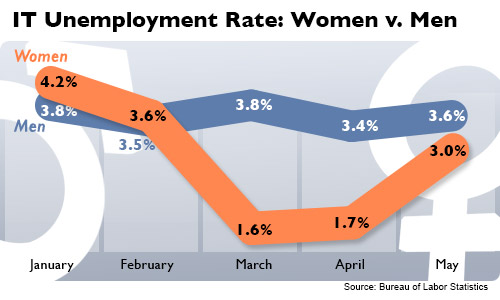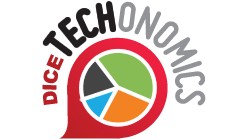For the past three consecutive months, the unemployment rate for women in IT has been lower than that of men, according to the Bureau of Labor Statistics. The latest figures, from May, show the women’s tech unemployment rate stood at 3.0 percent compared to 3.6 percent for men. A year earlier, the women’s rate was 6.8 percent compared to 2.3 percent for men.

Digging into the Numbers
When it comes to computer and math jobs, men outnumber women by a 3-to-1 ratio. In May, men held 2.9 million jobs compared to the 1 million held by women. “Women in computers and mathematics are a relatively rare commodity in an already exclusive field,” Eduardo Martinez, a senior economist with Moody’s Economy.com, told Dice News. “Those numbers tell me that if women in computer and mathematics want to work, they can easily get jobs.” Meanwhile, the Economic Policy Institute noted that the IT gender gap appears to have been narrowing for more than the past nine months, based on a 12-month moving average. In part, the change could be attributed to a desire by corporate America to attract and retain more women in the IT workforce, says Carolyn Leighton, founder and chairwoman of the Women in Technology International organization, or WITI. Additionally, many companies who are focusing new products or enhancements on women are hiring female professionals to ensure that their development and engineering teams reflect their end users. For example, gaming companies are expressing a greater desire to hire more women, Alex Churchill, CEO of digital entertainment recruiting company VonChurch, told Dice News. Meanwhile, online marketplace Etsy last year offered grants to women in its Hacker School and saw interest in participation soar from three female applicants to 24 women, according to the Atlantic. Etsy’s CTO, Kellan Elliott-McCrea, told a recent roundtable that the company sees hiring women as going beyond appealing to their largely female customer base: It also addresses the idea that attracting women engineers can be difficult when a company’s IT workforce is predominately male.

![Go to article IT Women See Unemployment Gap Widen [DiceTV]](/binaries/small/content/gallery/dice/insights/2012/07/dicetv-unemployment.jpg)

